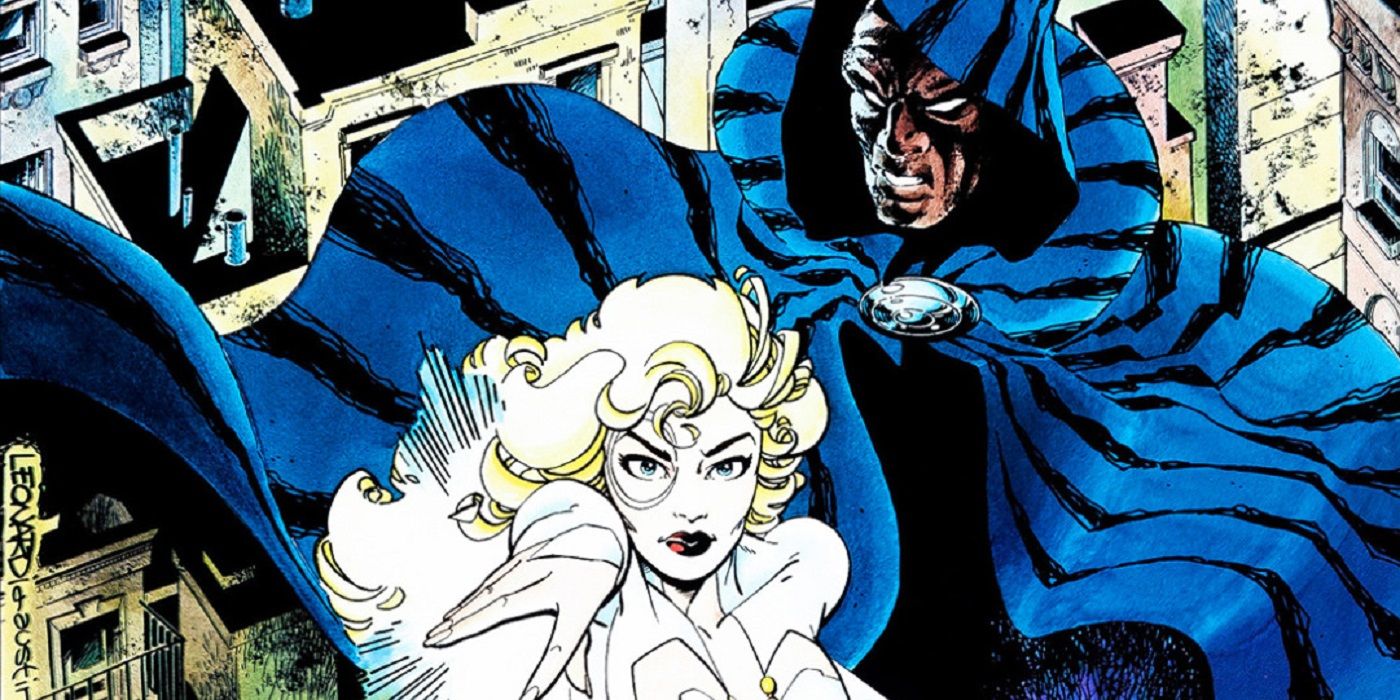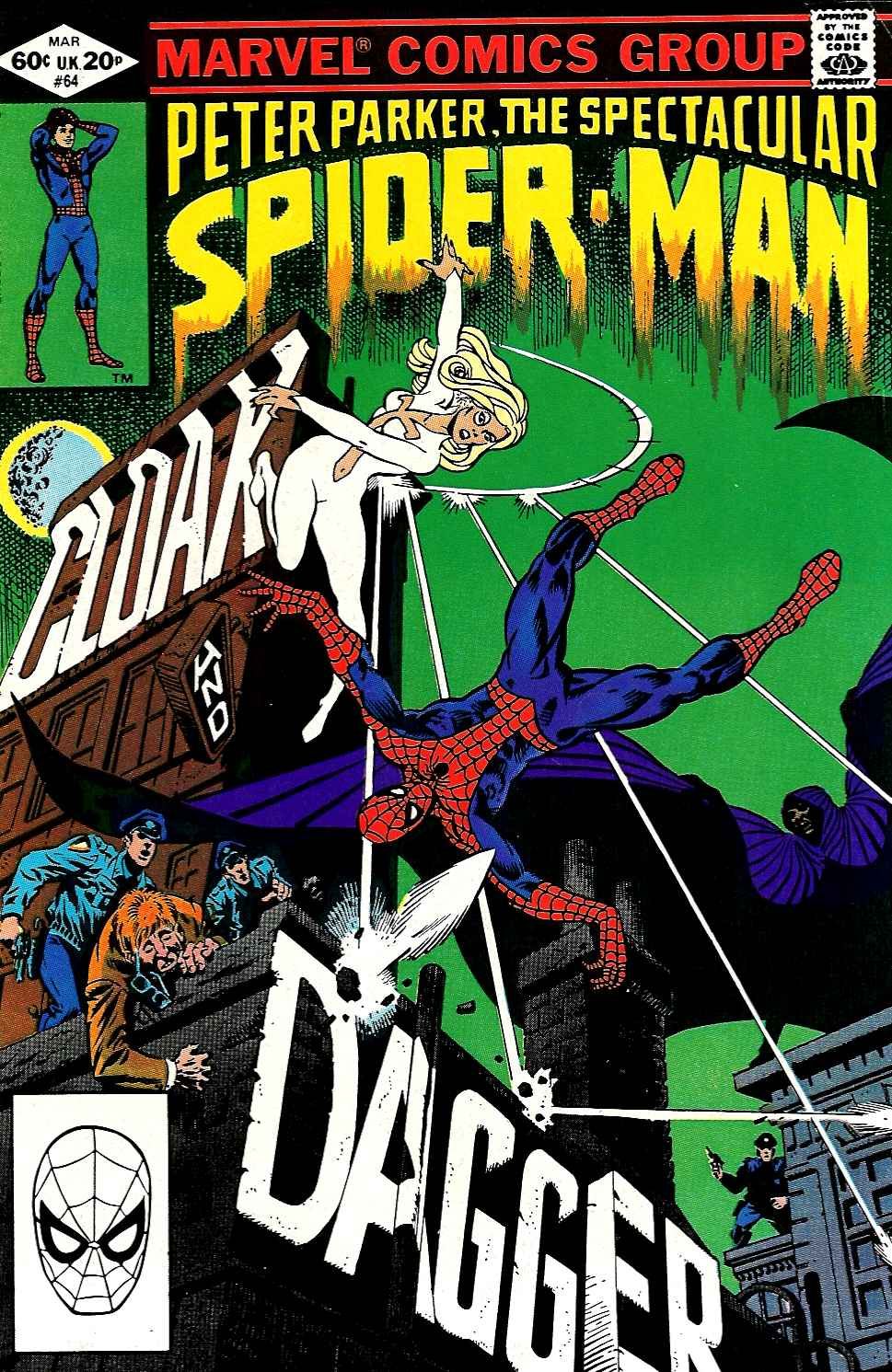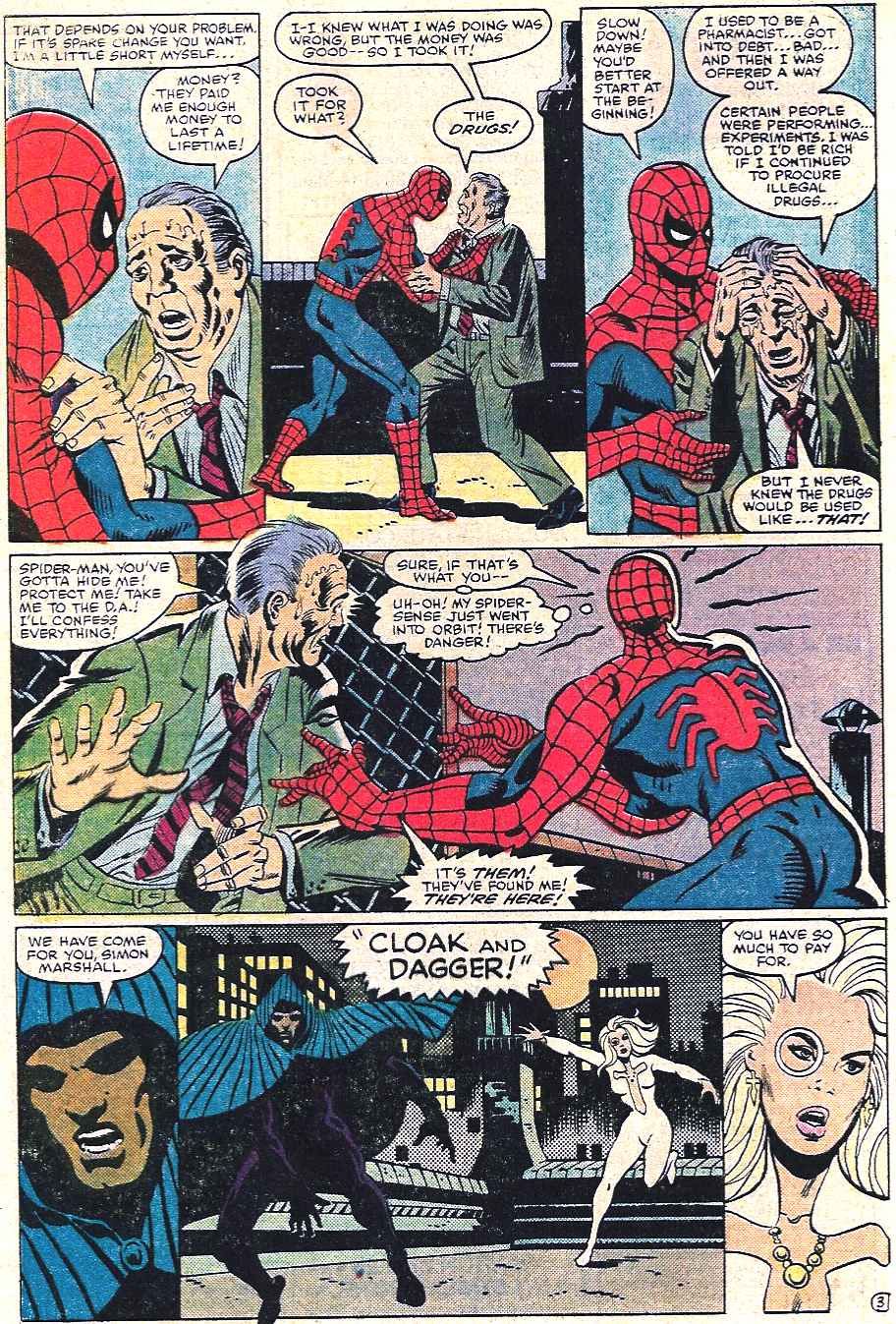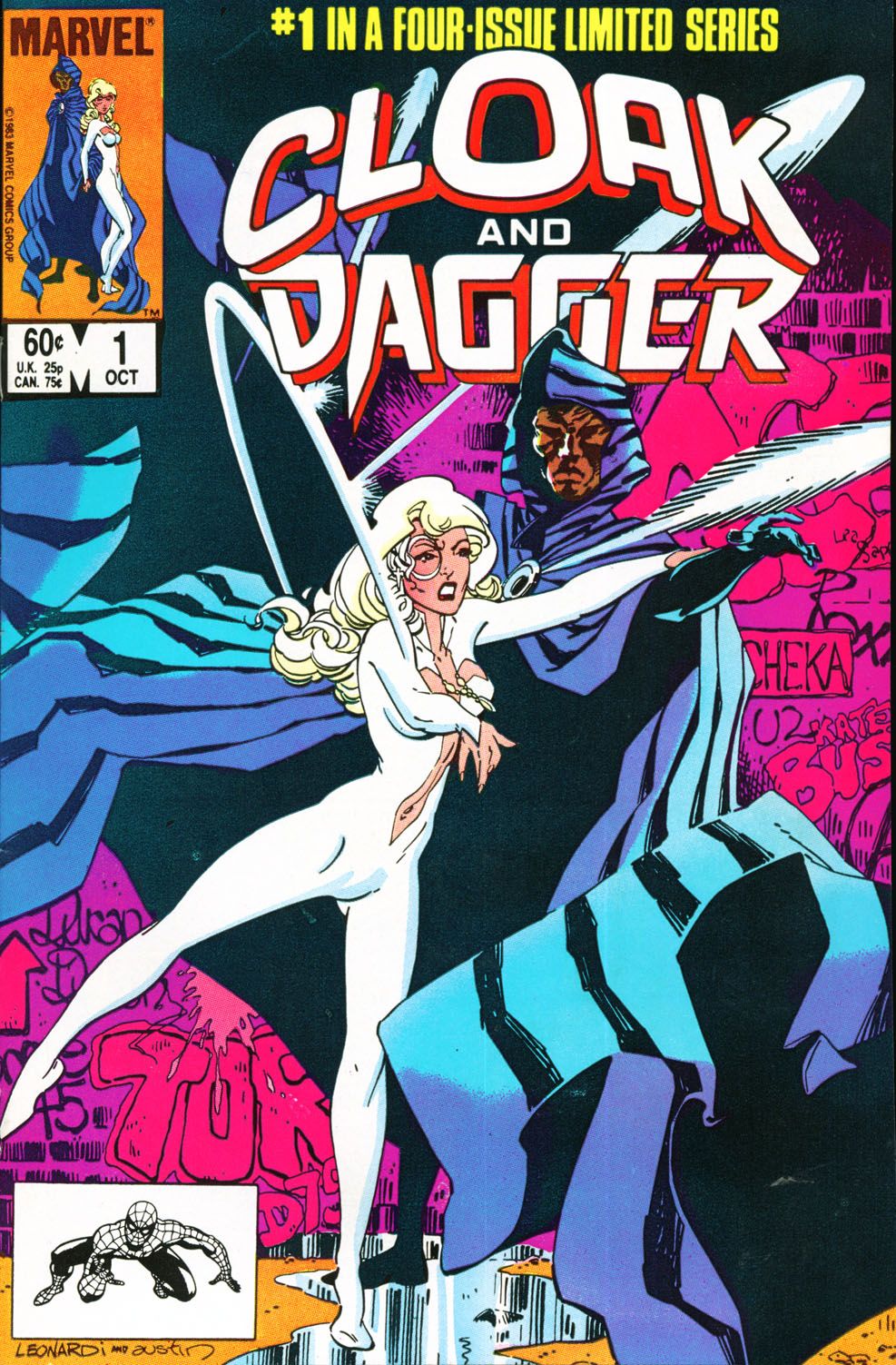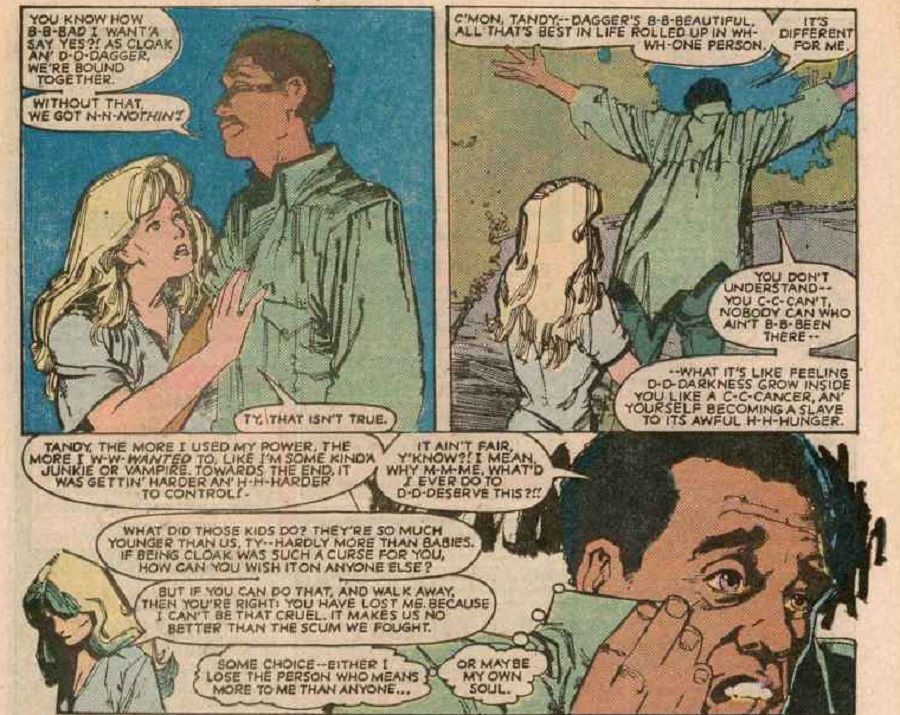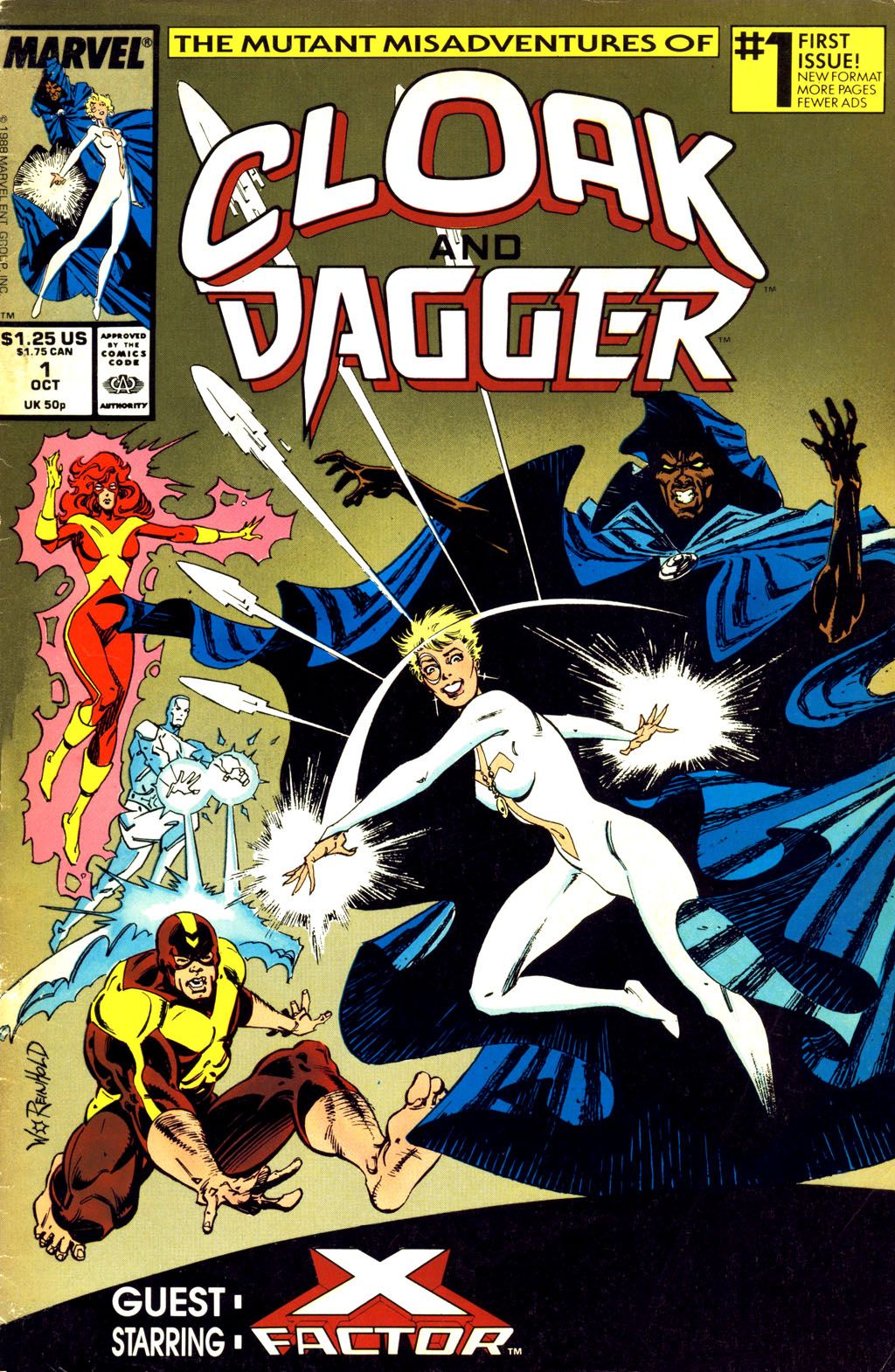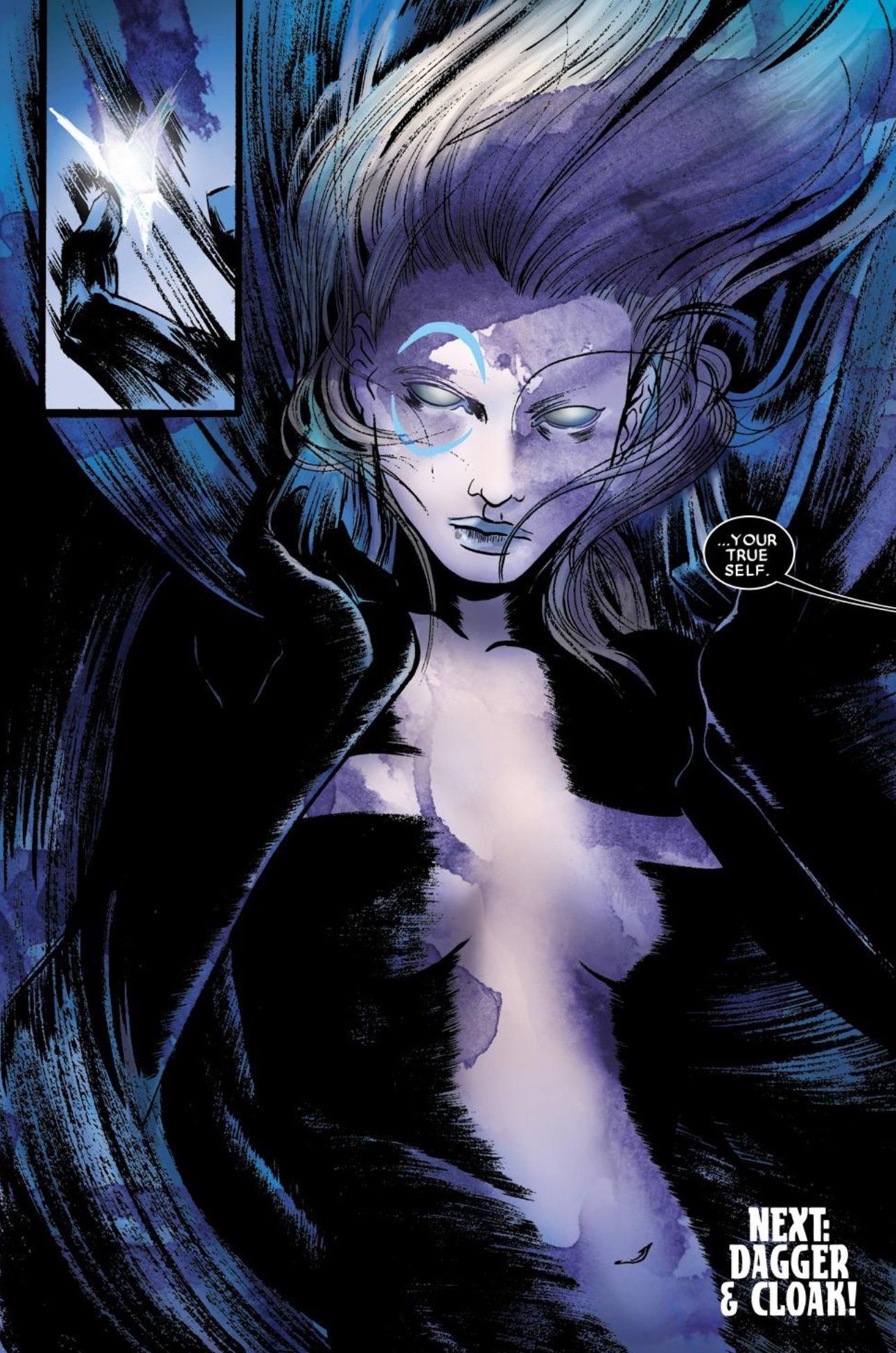With the recent announcement that the leads have been cast for the upcoming Freeform TV series based on the Marvel characters Cloak and Dagger, the question becomes - just who are Cloak and Dagger?
RELATED: Cloak & Dagger TV Series Reveals Stars, Character Descriptions
The early '80s were an interesting time in comic books, as it was becoming increasingly popular for comics to take on social issues. We had seen that happen already in the early 1970s with "Amazing Spider-Man"'s famous "No Comics Code" issue showing the problems of drugs, and the similar "Green Lantern/Green Arrow" storyline dealing with Green Arrow's sidekick, Speedy, becoming addicted to drugs. However, these types of stories became more and more prevalent in the 1980s. Therefore, it is important to note that Cloak and Dagger were very much of their time when they were introduced at the end of 1981 in the pages of "Peter Parker, The Spectacular Spider-Man" #64 (by Bill Mantlo, Ed Hannigan and Jim Mooney), behind a Will Eisner-inspired cover by Hannigan...
That issue established both the origins of Cloak and Dagger and their motivations. Tyrone "Ty" Johnson and Tandy Bowen were runaways who were experimented on by some drug dealers who were trying to synthesize a brand-new drug. The experiments left almost all of the test subjects dead, except for Ty and Tandy, who instead gained superpowers. Ty gained a cloak that allowed him to teleport and also send items (and people) to a "darkforce dimension" while Tandy gained powerful blades of light. They promptly decided to hunt down the drug dealers who almost killed them. This was much to Spider-Man's dismay, as while he was surely no fan of drug dealers, he did not agree with the idea of killing them, either...
Interestingly, Cloak and Dagger actually predated the famous "Runaways" story arc from Marv Wolfman and George Perez's "New Teen Titans" by nearly a year. This is interesting because that "Runaways" arc is often pointed to as the epitome of the early 1980s socially relevant comic book phase (that arc led to the White House commissioning a special anti-drugs issue of "New Teen Titans," and that, in turned, inspired the creation of a comic book starring Spider-Man and Power Pack by the National Committee for the Prevention of Child Abuse in 1984), and yet Mantlo and Hannigan were ahead of that game with their pair of runaways dealing with evil drug dealers.
While they were introduced more as anti-heroes than anything else, the characters were so popular that Mantlo soon began to tone down their methods. In fact, in one infamous story arc, Mantlo used the Punisher to show Cloak and Dagger the dangers of going too far in their crusade, as the Punisher's obsession with murdering the Kingpin was clearly driving the Punisher insane (which was highlighted by the Punisher beginning to use lethal force on minor crimes during the story). Cloak and Dagger eventually eased off on the whole killing thing (this was aided by Dagger discovering that her blades of light could also be used to cleanse people of drug addictions rather than simply stabbing people).
RELATED: Jeph Loeb Reveals Why “Cloak & Dagger” Landed At Freeform
This led into their first ongoing series, with artists Rick Leonardi and Terry Austin taking over the art duties.
The interesting thing about these early "Cloak and Dagger" issues is that Mantlo made sure to hold true to their origins, in the sense that Cloak and Dagger really almost entirely fought only against drug dealers. While it might have been true to their origins, it also served to somewhat limit the characters, as they became tied very clearly to one specific topic, which can be a problem over time as you typically do not want to get too tied down to one specific era of history.
After their miniseries, Cloak and Dagger were prominently featured in a storyline in Chris Claremont and Bill Sienkiewicz's "New Mutants," as their latent mutant abilities were explored a bit, but moreover, they saw their powers transferred to Sunspot and Wolfsbane and they had to address something that became a major recurring feature with these characters over the years. As Cloak and Dagger, Ty and Tandy are completely tied to one another, but if they weren't Cloak and Dagger, would that still be the case? Is there a relationship between the two if they are not inherently tied-together heroes? And is that relationship worth the downside of being Cloak and Dagger?
Ultimately, they decided to take their powers back. This led to a new bi-monthly ongoing series in 1985. Sales were a bit slow on that series, so in 1987, "Cloak and Dagger" and "Doctor Strange" both ended their individual series and launched a new "Strange Tales" anthology series. Bret Blevins was now the artist on the series. Less than a year into this series, Bill Mantlo was removed as the writer of his creations. Former inker on the series, Terry Austin, was promoted to writer. Austin introduced the first superpowered nemesis of Cloak and Dagger, the dangerous sorcerer, Mister Jip. Austin explained to "Back Issue" magazine that "Characters are never more interesting than when they have a seemingly unopposable force to push against, and to that end I came up with what I hoped would be their major reoccurring arch-foe, the maniacal Mr. Jip, and his foot soldiers Night and Day."
"Strange Tales" led into a second "Cloak and Dagger" ongoing series, with Austin doubling-down on their mutant connections by titling this new series "The Mutant Misadventures of Cloak and Dagger."
It lasted almost two years, but Austin was finished on the book before it came to a close (the final issues tried to establish that CLoak and Dagger had received their powers from the demon D'Spayre,!).
RELATED: So, Are Cloak and Dagger Mutants or What?
In the last two decades, Cloak and Dagger have mostly fallen into the position of occasional guest appearances, although they have made a few notable ones over the years. Cloak was a big part of the "New Warriors" crossover that brought together the various characters with a connection to the "Darkforce" (like the Shroud and the newly created villain, the Darkling), with Dagger ending up joining the New Warriors for a time afterwards, which caused tension between the pair.
They were a big part of the "Maximum Carnage" storyline in the "Spider-Man" titles, as we learned that Shriek, the co-head of Carnage's little family of killers, had been transformed due an encounter with Cloak in the past, early in his superhero career, and that had triggered her powers, so he felt somewhat responsible for the carnage that she caused. Dagger, meanwhile, became a key part in defeating the villains, due to her ability to heal people of infections with her light.
Cloak and Dagger split for a time, and Dagger became part of an informal team of heroes known as the "Marvel Knights" (Punisher, Black Widow, Daredevil and Moon Knight), as Cloak got more and more aggressive with his powers (which had been a recurring problem for him over the years).
During the period when Norman Osborn was in charge of SHIELD, Osborn tried to form his own team of X-Men to match the Dark Avengers that he had formed. He enlisted Cloak and Dagger, who naturally turned on him when it came time to fight the real X-Men. Cloak and Dagger ended up on the mutant island of Utopia. However, it was at this point that it was confirmed that they were not mutants, but rather just mutates, like Spider-Man and the Fantastic Four.
Most recently, they were involved in a plot by the villainous Mister Negative, who reversed their powers and, in turn, made them evil.
Luckily, Spider-Man eventually cured them and they returned to normal, putting them into a great position for a new series to tie in with their upcoming TV show.

